Sister Boi Nghiem, known as True Pearl, was ordained in 2005. This article features an excerpt from a heartfelt interview for the Plum Village Newsletter in which she explores siblinghood and the art of building true community, drawing from her experience on the monastic path.
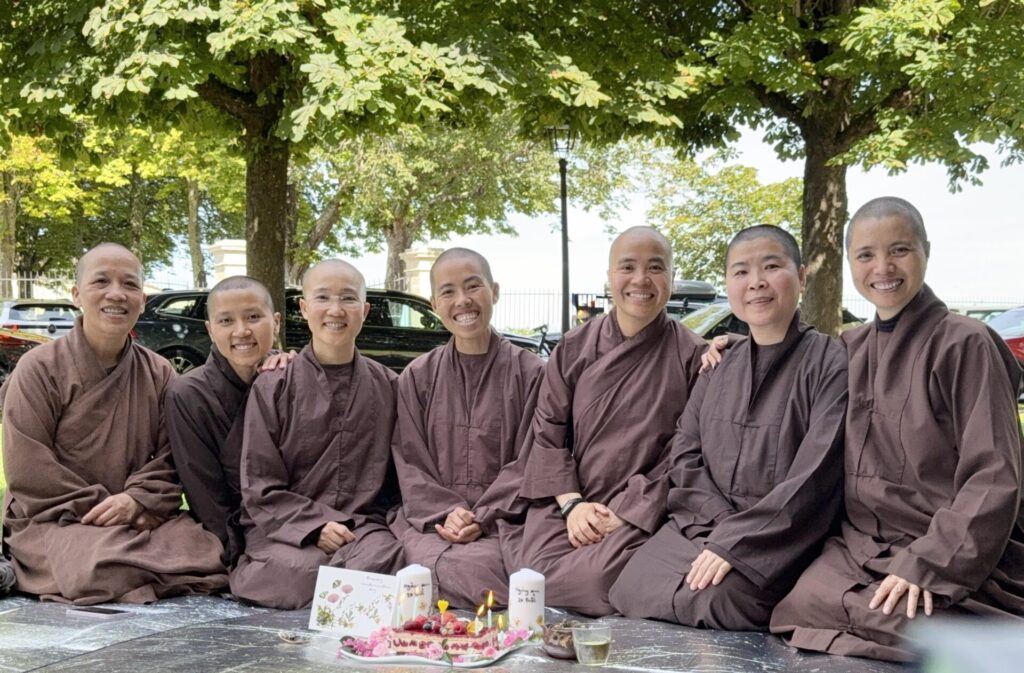
Listening with Heart
Newsletter Team: We all have different ideas about what it means to build brotherhood, sisterhood, siblinghood. What does it mean to you? Could you share any challenges that you face? [ e.g what does siblinghood mean to you?]
Sr. Boi Nghiem: When I spend time with my monastic siblings – whether sharing a cup of tea or helping each other – whenever I feel my heart is happy and full, I know I’m secreting happy hormones. To me, that is siblinghood. But if I’m in a setting where we’re drinking tea and negative thoughts or emotions arise in me – like when too many conversations happen simultaneously, without a clear focus – I don’t feel my heart is at peace. At that moment, we’re not genuinely fostering siblinghood, even though we’re physically together. So, I pay close attention to my body during these times.
Before I became a nun, I often felt an unbearable emptiness inside. That’s why I emphasize the importance of quality time. Meaningful conversations help us learn something new about our siblings, something we may not have known. This requires a space where we feel safe enough to share what lies deep in our hearts. How attentive are we to each other’s needs when we work or travel together? Simple acts of kindness – like carrying someone’s luggage or offering a cup of juice – build siblinghood. It’s someone pouring tea for us to enjoy. It’s words of encouragement after we facilitate an activity, give a Dharma talk, lead a sharing on walking meditation for the first time, or read the Five Contemplations in English for the first time. Just that compassionate gaze, that great support – that is siblinghood. It’s about encouraging each other and being there to help when needed.
True siblinghood is the absence of competition and jealousy. I’ve experienced a sister noticing my sadness and asking sincerely, “How are you doing?” That question made me feel that she had time for me. I can share my thoughts and feelings openly when someone has time for me. That, to me, is how we build siblinghood. Living with 40 sisters, I’ve had to accept that I won’t be able to form deep connections with all of them. I don’t need to force it. The word “relationship” means connection, and connection is emotional. If, during the day, I didn’t say “Hi” to a sister or ask her a few questions, I used to feel bad and judge myself – thinking I wasn’t contributing to the harmony of the sangha, that I was a bad practitioner. But that was me forcing myself, and it wasn’t genuine. Building siblinghood must come naturally.
Organic food is very healthy, but if pesticides are used, it may look beautiful on the outside, but it’s not healthy for our bodies when we eat it. It’s the same with building siblinghood. My presence won’t be appreciated if I’m forcing myself or feeling guilty. Sometimes, I also have to accept that I can’t look someone in the eyes or talk to them. In those moments, at least in my mind, I practice cultivating gratitude for the fact that they are monastics, part of the sangha, and not doing anything to hurt me. This is another way of returning to the practice of dwelling happily in the present moment. One time, I had real difficulty with a sister. Every time I thought about her, my heart would beat very fast because I had this big internal knot, and I would only remember her harsh words to me. And I didn’t want to continue having those feelings. So, I needed to practice changing my thoughts, saying, “Okay, if you cannot say anything nice, please think of something nice.” I asked myself, “Is she doing anything right now that hurts me?” The answer was “No.” “Then why am I angry at her right now?”
When I saw her practicing walking meditation peacefully, I ensured the image entered my consciousness as profoundly as possible. To me, this practice is also about building siblinghood. It doesn’t have to be just coming together, drinking tea, sitting for hours, talking… No! It can be how we think about our siblings from a distance if we can’t come closer. I do this because I want my mind to be beautiful.
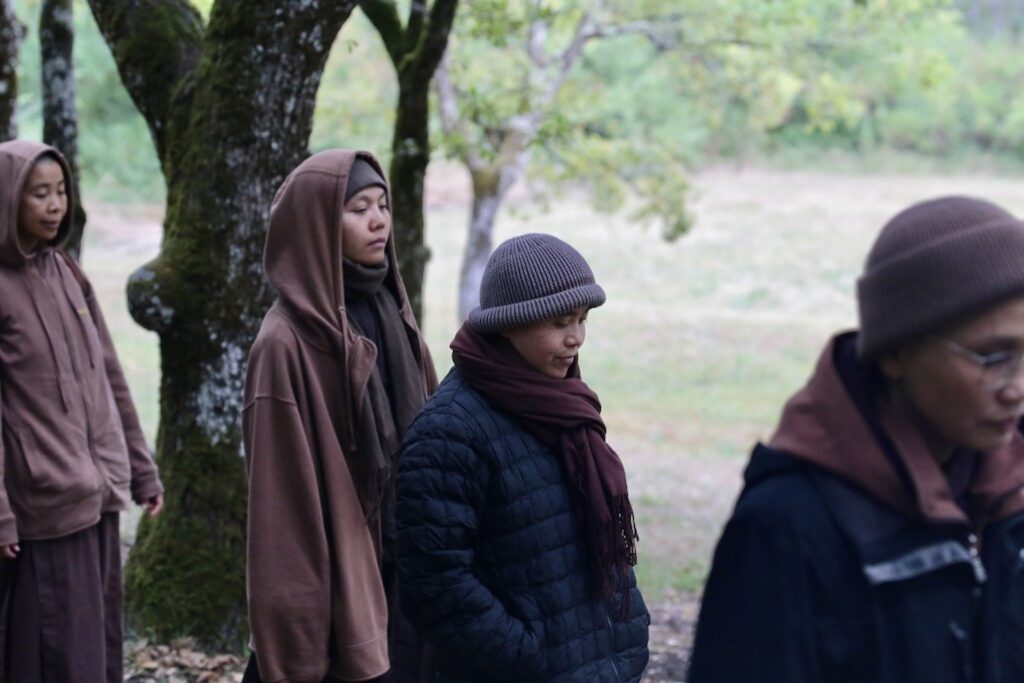
Creating a Safe Space for All Beings
Newsletter Team: Thank you for courageously supporting the 2SLGBTQIA+1 & BIPOC2 communities. What feedback have you received, and what insights have you gained in the process?
Sr. Boi Nghiem: Over the years, I’ve learned that mental health issues, depression, and suicide rates among 2SLGBTQIA+ individuals are much higher than average. Understanding this, my compassion grows deeper. What can I do to help? They’ve been crying out for help, waiting for someone to understand, hoping their families will accept and support them. But often, they face rejection. “It’s contagious – stay away from them.” Those words wound. They feed the darkness that can push someone to the brink of ending their own life. I refuse to be part of the harm that perpetuates their suffering. That’s why I’m vocal in my support for the 2SLGBTQIA+ community. When I speak up, I save lives, if only for a moment. People who identify this way will always need other factors for happiness and health, but at least I contribute to the fight against despair.
There’s so much homophobia rooted in ignorance, fear, and a lack of openness.
When I first wanted to become a nun, I kept it a secret from my family for a long time. It was painful. Living a lie, hiding my true self, was a silent agony. It took everything I had to find the courage to finally tell them. Now, imagine the courage it takes to come out to your family, knowing the consequences could be devastating. Many in Generation Z identify as 2SLGBTQIA+ and feel more comfortable expressing themselves to people they trust. So, when a monastic or lay friend comes to me and shares that they are part of the 2SLGBTQIA+ community, I first express my deep gratitude. In the past, I might have distanced myself mentally. But now, I recognize the courage it takes to share such an intimate part of yourself. I honor this openness and respond with acceptance and support.
I’ve also received a lot of encouragement from monastics and friends who see the importance of making our practices and practice centers more accessible and welcoming to the BIPOC community. During the COVID pandemic, six monastic Dharma Teachers from three U.S. centers met monthly on Zoom to engage in heartfelt and open conversations, sharing their insights and reflecting on their struggles and shortcomings in understanding the complex topic of race. They reminded me why this work is so important – not just for others but for myself as a female Vietnamese-American. By creating space for BIPOC friends, I am also honoring my ancestors, life experiences, and healing.
So far, I’ve helped organize two BIPOC retreats – one at Magnolia Grove Monastery and one at Deer Park Monastery. Who knows? Maybe one day we’ll host one at Plum Village. We have already planted these seeds in the community. Some monastics and lay friends have expressed concerns, thinking that having a BIPOC retreat might exclude others. Hearing this feedback can be discouraging. Sometimes, I question whether it’s worth continuing. But then I remember the faces of those who’ve told me they finally felt seen, understood, and healed at a BIPOC retreat, and I know this work is necessary – even if some misunderstand its purpose.
When we organize a Vietnamese retreat, a Wake-Up retreat, or a teenagers’ retreat, are we excluding anyone? If so, why? We recognize the need to create conditions for people with shared joys and struggles to come together, heal, support, and transform. I believe in the collective wisdom of the sangha to transform negative mental formations; we’ve done it before and can do it again. We also don’t have much experience organizing these kinds of retreats yet, so we need more BIPOC retreats – to make them as regular and seamless as the teenagers’ or Wake-Up retreats.
One of the most beautiful aspects of a BIPOC retreat is the space it creates for remembering our ancestors, reclaiming our roots, and honoring our many beautiful cultures and identities. In honoring our ancestors, we also reclaim the strength to face today’s struggles. At a BIPOC retreat, participants know they are safe, supported, and free from the worry of microaggressions – whether it’s how people look at them, judge their words, or even critique their appearance or clothing.
I witnessed something profoundly moving during the BIPOC retreat in May 2024 at Deer Park Monastery. During the “Be-In” session, when friends shared poems, songs, or skits, every offering was dedicated to those suffering from wars. It wasn’t just about performance or entertainment – it was a profound act of love and solidarity. Chills ran through my body as I listened. Each word carried meaning. Every act carried love. It reminded me of our deep interconnectedness in suffering and joy – a true expression of interbeing. The friends at the retreat weren’t just remembering their pain; they were sending love and solidarity worldwide.
This is why I dream of more BIPOC retreats – not as an extra but as an essential part of our practice. We need these spaces to heal, grow, and remember that together, we are strong.
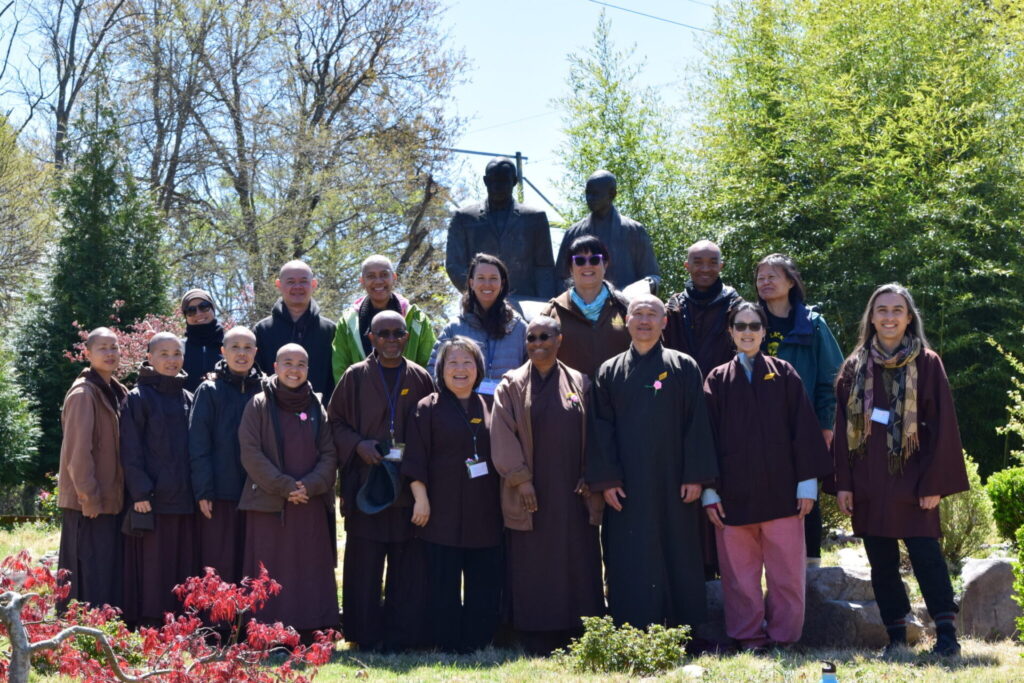
Continue reading the full interview (p.68) in the Plum Village Newsletter.



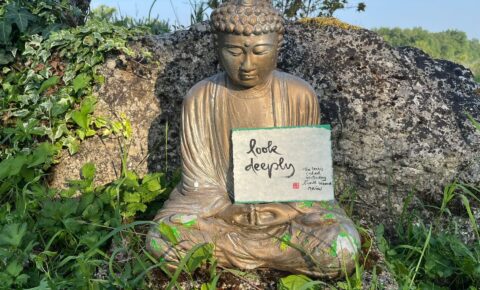

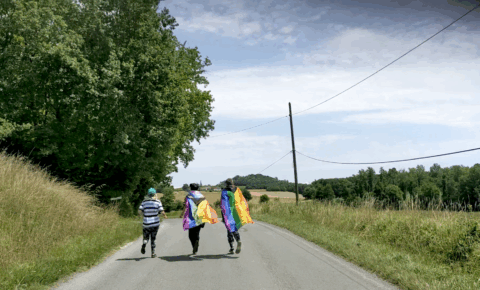
Share Your Reflections